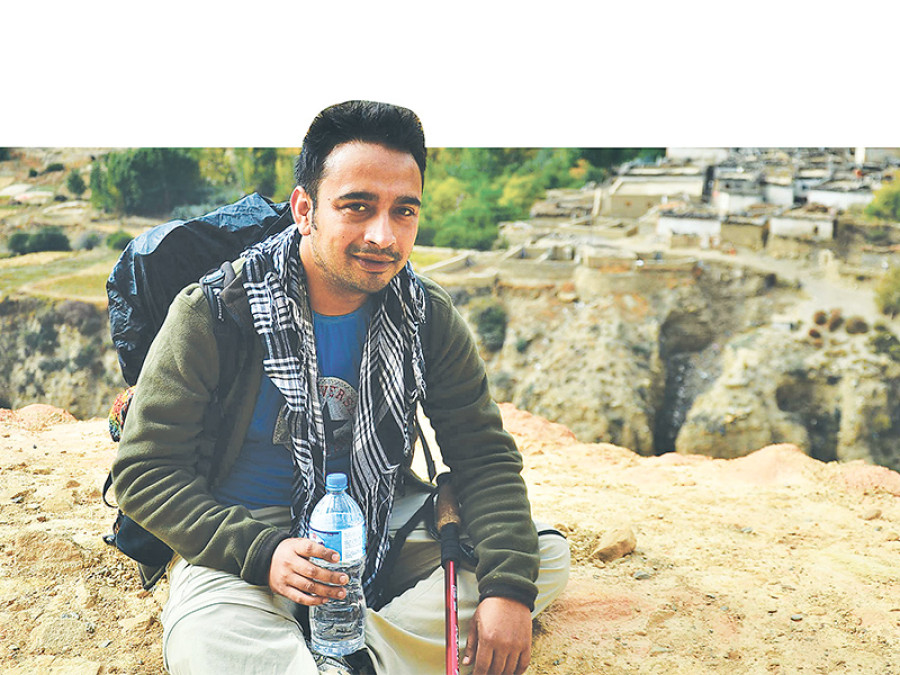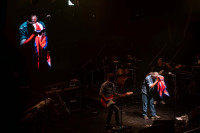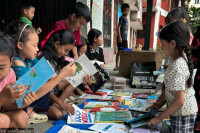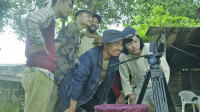Entertainment
Nepal through vignettes
Jay Poudyal is the man behind Stories of Nepal, a blog that features photos and stories of the average Nepalis he meets every day.
Jay Poudyal is the man behind Stories of Nepal, a blog that features photos and stories of the average Nepalis he meets every day. Derived from The Humans of New York, Poudyal’s blog is informed by a similar aesthetics: it is filled with photos of Nepalis that are accompanied by short, interesting stories about the subjects. An avid traveller and reader, Poudyal says he loves to listen to and tell stories. The Post’s Gaurav Pote caught up with Poudyal recently to learn more about the man behind the popular blog. Excerpts:
What have you been doing lately?
I’ve been travelling and walking a lot to gather narratives for Stories of Nepal. That keeps me occupied.
Was photography always your first choice for a profession?
I used to be a graphic designer, but not anymore. The creative arts have always fascinated me. I also had many passions earlier, but photography is the one that stayed with me.
How did Stories of Nepal come about?
As a child, I loved listening to the vivid folktales my grandmother told me, and I always wanted to immortalise the characters in those stories. As I got older, I got into reading, travelling and taking photos. Back then, I used a small camera whose shots needed to be developed in a dark room. A few years ago, I started getting intrigued by Humans of New York. I understood that Brandon Stanton, the creator of the photo-blog, was connecting millions of people globally using only the photos of everyday New Yorkers and their own words to frame their anecdotes. Humans of New York, I realised features stories that allows its readers to connect as humans and gives us a sense of belonging. I decided to do something similar because as Nepalis it feels like we have lost touch with each other. We know too little about others but we’re quick to pass hasty judgments about them. We tend to categorise people based on their appearances, which is not right. Nepal’s societies and cultures are quite diverse, and the people’s stories are diverse too. I wanted to tell the people’s stories to people. So, on October 9, 2013, I went to the teashop that I used to visit every day, took the waiter’s photo and asked him a little about his life. His name was Santosh Magar, the first of many people I talked to that day. I also went to my barber and the local doughnut maker. I started with the people I met every day, whose stories I was not aware of until then. I noted down what they said and created a Facebook page where I compiled those stories. Many of my friends liked it and encouraged me to continue with it. So I did. What you see now is the extension of that first day of work.
Tell us a little about what you were doing before Stories of Nepal?
Before Stories of Nepal, I ran an advertising and marketing agency. My work involved frequent corporate meetings, increasing profits and designing marketing schemes. Although I travelled a lot, the work always hovered in the back of my mind, and I had little or no time to explore the places I visited. You could say I was in the constant pursuit of name, fame and power.
And after Stories of Nepal?
All that came to an end with Stories of Nepal. I sold my business, and now all I do is travel and gather stories. I have understood that happiness and inner satisfaction come not with material abundance, but with spiritual awakening, and this belief has helped me lead a content life and make better decisions.
What future do you see for your photo-blog? Can we hope for a photo story or an exhibition or things along those lines?
I don’t have any ambitious plans for Stories of Nepal. It will continue the way it has so far. A few promising opportunities did certainly come my way after my blog gained some momentum. I also have other projects that I would love to finish soon. So there’s always hope, but everything will materialise in due time.
We hear you don’t make money from Stories of Nepal. How are you surviving?
Stories of Nepal is purely a personal journey for me—to understand and connect Nepalis through their personal narratives. It is no more than a passionate hobby that has turned into a full-time work, but I don’t do it for monetary gains. I work as freelance graphic designer and photographer—mostly for social projects. That allows me to pay the bills and come up with my travel expenses.
How do you choose your subject for Stories of Nepal? Tell us about your experience.
When a stranger with a camera walks up to you and asks you personal questions, it can be quite intimidating. I try not to do that. I greet the people on the street with a Namaste, introduce myself and tell them about what I do. I usually show them the blog on my phone and just talk to them. It’s more of a casual conversation than an interview. I always have a small list of questions I will ask them—what their fears are, what they recall from their childhood, what their aspirations are, etc. I record the conversation and take their photo. It’s a two-way street for me. As people share the stories about their lives and dreams, I end up sharing my fears and aspirations with them.
When they’re telling me their stories, especially if it’s a sad one, a brief window of intimacy usually opens up. That can be quite overwhelming at times because for a moment their sorrows become yours. It’s hard not to feel sad when a housewife is telling you how her family is coming apart owing to alcohol and physical abuse. Pleasant memories and honest laughter do also sneak their way into a lot of conversations, but most people rarely talk about those things. That’s not to say that most people I’ve interviewed are miserable, but I’ve come to learn that sorrow is one of the most ubiquitous and intimate of all human emotions, and I am truly humbled by everyone’s willingness to let me into their lives. But not everyone is so keen on doing that. It’s frightening how we don’t trust each other so easily these days. I think life is more about unlearning and shedding the things that have been taught to you. Our education system, too, needs to be updated. Also, as individuals, we need to practice a lot of introspection, look inwards and change the way we do things.




 8.12°C Kathmandu
8.12°C Kathmandu









